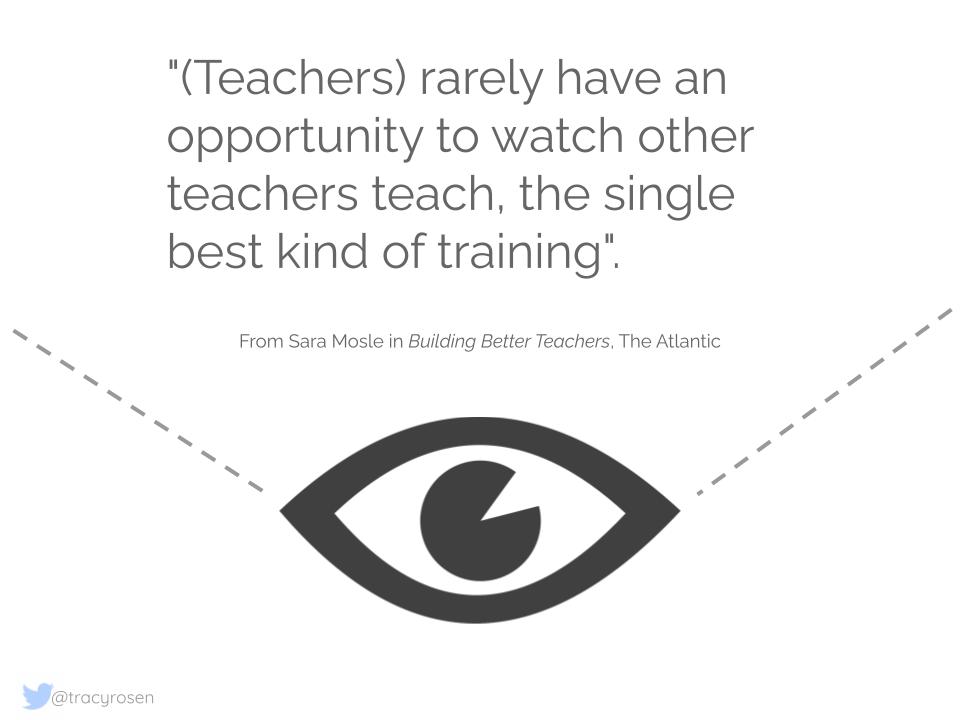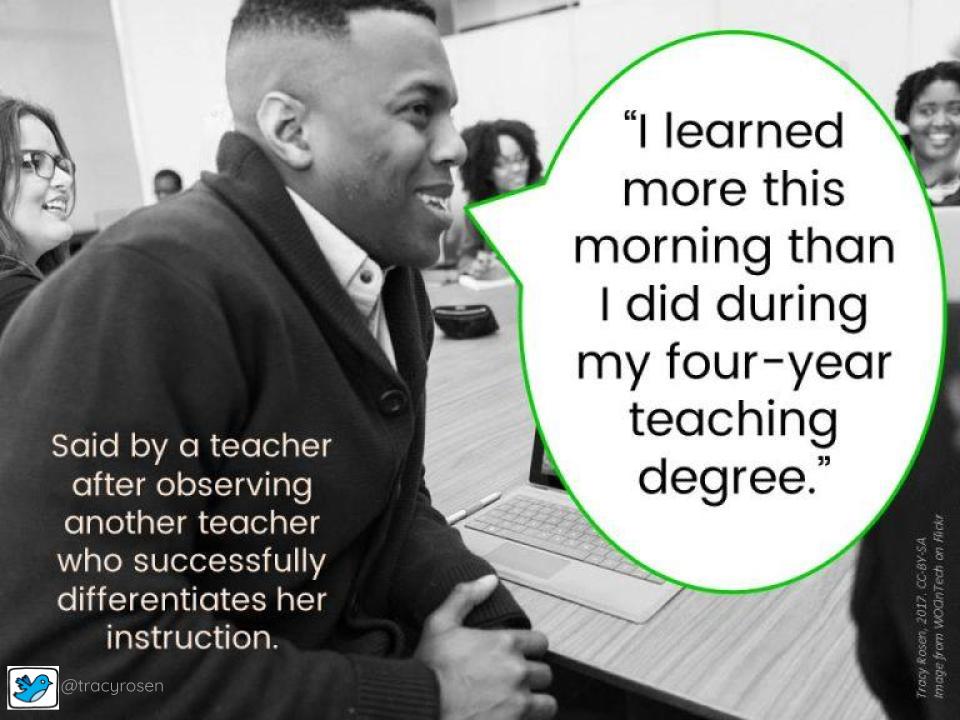Visiting each others classrooms.
(Really, it’s that simple.)

I’ve written about this a few times, so some of what I have written in the past will show up again here. It’s not a new concept and it is still as true!
PD (Professional Development) can invoke strong reactions. How often have you been made to ‘do PD’ that is of no relevance to you? And all the while you are thinking about what it is you could be doing with that time (marking, planning, meeting colleagues or with a student, calling a parent, reorganizing desks, reading that new program I am expected to teach…) I remember being forced to sit in a workshop on how to start a twitter account and who to follow and why it was so awesome. This was about 5+ years AFTER I had started using twitter on a regular basis. While it may have been a great workshop for someone wanting to start a new twitter account… It was a waste of time for me.
Sometimes we’re lucky and we attend a workshop that really hits home. It makes us feel good about teaching and sometimes may even impact what happens in our classrooms. Unfortunately, the majority of the PD we are expected to do doesn’t have this impact.
That’s likely because we aren’t usually involved in determining the content of our PD. Someone, somewhere, has guessed at what would be best for all of us at the same time.
To counterbalance this, we can all try to get as much of the best PD ever – visiting each others classrooms.
I remember many years ago, our school district had a big push for differentiation in the classroom. Teachers participated in PD sessions where they were told why to differentiate their lessons and how they might differentiate a lesson (with examples from elementary classrooms in the United States. Not very helpful for the teachers who taught high school… )
One day, a group of teachers at a PD session (at 4pm, after their school day) rebelled a bit. They were tired and frustrated and finally one of the teachers said, listen, I can listen to this theory forever and I still won’t grasp what this can look like in my classroom.
So I found a classroom they could visit to see it in action. About 5 of us travelled to Burlington, Vermont and spent the day in a grade 8 classroom with a teacher who differentiated her lessons. At one point, I looked over at the teachers I brought on the field trip and I tried to figure out what they were thinking. Were they thinking about how far they just travelled? How much work they had to do to prep for the substitute teacher? Were they thinking this was a waste of time?

As the children went out for their first break of the day, one of the teachers turned to me and breathed out, “I feel like I learned more this morning than I ever did at McGill,” (McGill University is where most English speaking teachers in the Montreal area do their education degree.)
When we are in someone else’s classroom, we aren’t only observing what they do but we also reflect on how we would do it. We look at the walls, the classroom setup, how the teacher manages the class, how they introduce a topic and wrap it up at the end. It’s a bit of a gift, to be able to reflect on teaching in a classroom that is not yours, where you aren’t on call every moment. In this case, the teachers were looking to learn about something specific – differentiation in action. But I remember that one of the biggest takeaways that we spoke about on the way home was how one student had two desks. The teacher had explained it was a student who needed to move and used to wander around the classroom, sometimes disrupting others, sometimes missing information they needed. So she got him a second desk and when he needed to move, he could just switch desks. It worked for them.
You don’t need to travel to Burlington to experience this kind of PD. You can travel down the hall. It’s PD that is tailor made for each person who does it because we can reflect on whatever we see and connect it to our own teaching.
It’s really the best PD ever.
I wrote this article for the First Nations Adult Education School Council. It is cross-posted here.

Leave a Reply